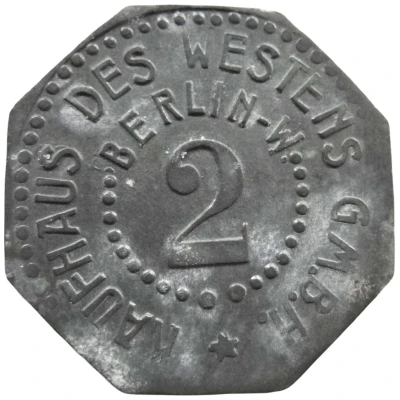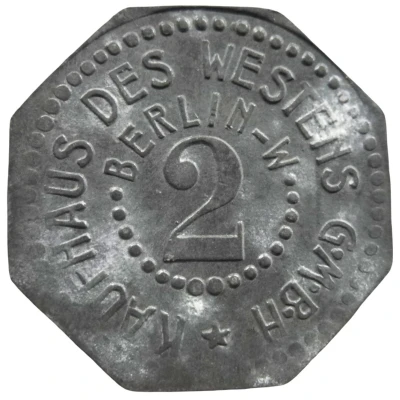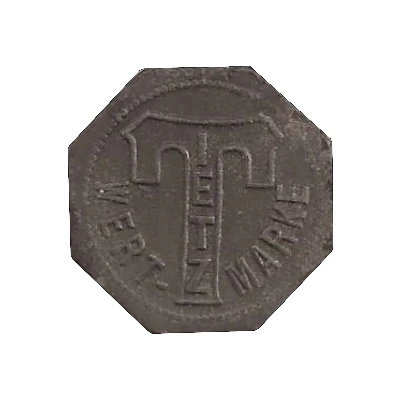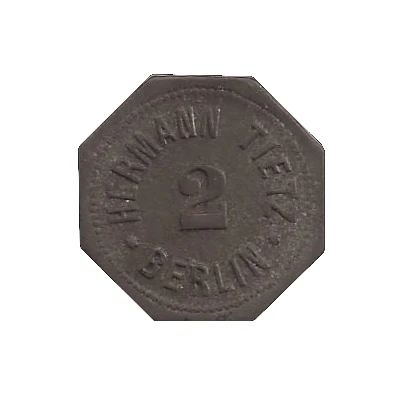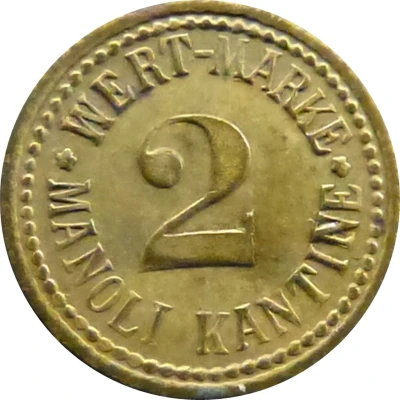
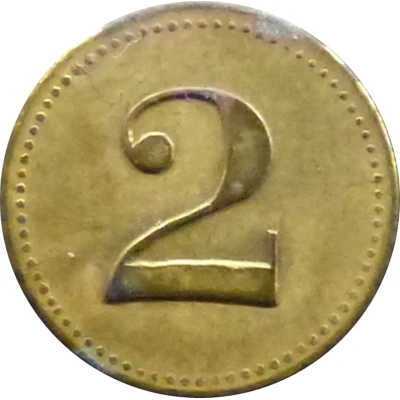

© Willem63 (CC BY-NC-SA)
2 Pfennigs - Berlin (Manoli Kantine) ND
| Brass | 1.2 g | 16.0 mm |
| Issuer | Prussian province of Berlin (German notgeld) |
|---|---|
| Type | Standard circulation coin |
| Value | 2 Pfennigs (2 Pfennige) (0.02) |
| Currency | Mark (1914-1924) |
| Composition | Brass |
| Weight | 1.2 g |
| Diameter | 16.0 mm |
| Thickness | 0.9 mm |
| Shape | Round |
| Technique | Milled |
| Orientation | Medal alignment ↑↑ |
| Demonetized | Yes |
| Updated | 2024-10-04 |
| Numista | N#317467 |
|---|---|
| Rarity index | 97% |
Reverse
Pearl rim, with denomination centered
Script: Latin
Lettering: 2
Edge
Plain
Comment
Menzel: BBBFa: Zigarettenfabrik (Cigarette factory)
Manoli was the name of a German cigarette factory. It was founded by Jakob Mandelbaum (* 1859; † October 23, 1918) in Berlin, initially under the name Cigarette Factory Argos, and in 1897 it is said to have been named after Jakob Mandelbaum's wife Ilona Mandelbaum (read backwards). The origin of the name cannot be proven with certainty, because Jacob Mandelbaum's wife's name was Rosa and she was born in Jotzen in 1857. There are suggestions that Manoli may have been a nickname of Jacob Mandelbaum.
Another variant of the naming names a foreign language as the origin, in which Mandelbaum is translated as Manoli.
The company was known for its excellent packaging design. The Manoli corporate logo, found on merchandise, corporate trucks, window displays and promotional materials, is often cited as an early example of corporate design.
Interesting fact
The 2 Pfennigs - Berlin (Manoli Kantine) ND coin from the Prussian province of Berlin is a rare example of a coin that was issued during a time of economic crisis in Germany. The coin was made of brass and weighs 1.2 grams, which was a unusual material and weight for coins at that time. This coin was issued during the period of hyperinflation in Germany in the early 1920s, when the value of the German mark plummeted, and many people turned to alternative forms of currency, such as notgeld, or emergency money, to pay for everyday goods and services. The coin's design features the image of a woman, Manoli Kantine, who was a popular figure in Berlin at the time, and was known for her beauty and her association with the city's nightlife. Despite its rarity and historical significance, the coin is still relatively affordable for collectors, and is a popular item among those interested in the history of German currency.
